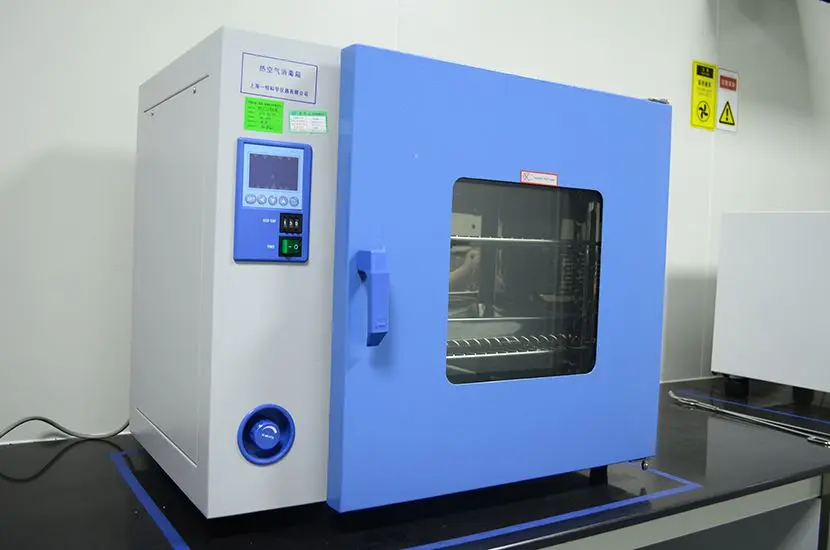
Biological Evaluation of Medical Devices ISO 18562 Test Laboratory
The Origin and Current Status of ISO 18562
In March 2017, the ISO 18562 series of standards "biocompatibility Evaluation of Breathing Gas Pathways in Healthcare Applications" was officially released and came into effect.
In June 2018, the U.S. Food and Drug Administration (FDA) announced the recognition of ISO 18562, incorporating it into the consensus series standards in the Federal Register. Starting from August 2018, all medical devices, components, or accessories that contain gas pathways through which gases can be inhaled by users must provide ISO 18562 series standard test evaluation reports when applying for FDA registration.
In the same year, the latest version of ISO 10993-1:2018 "Biological Evaluation of Medical Devices Part 1: Evaluation and Testing Within a Risk Management Process" clearly stated that "for gas pathway components that are indirectly in contact with patients, the exclusive series standard ISO 18562 shoULd be used for biocompatibility evaluation."
As a result, for medical devices, components, or accessories containing gas pathways, such as ventilators, oxygen concentrators, and breathing masks, ISO 18562 has become an unavoidable requirement for both EU and US exports.

Details of the ISO 18562 Series Standards
ISO 18562 is divided into four parts:
- ISO 18562-1 Biocompatibility Evaluation: Biocompatibility Evaluation of Breathing Gas Pathways in Healthcare Applications - Part 1: Evaluation and Testing Within a Risk Management Process.
- ISO 18562-2 Biocompatibility Evaluation: Biocompatibility Evaluation of Breathing Gas Pathways in Healthcare Applications - Part 2: Tests for Emissions of Particulate Matter.
- ISO 18562-3 Biocompatibility Evaluation: Biocompatibility Evaluation of Breathing Gas Pathways in Healthcare Applications - Part 3: Tests for Emissions of Volatile Organic Compounds (VOCs).
- ISO 18562-4 Biocompatibility Evaluation: Biocompatibility Evaluation of Breathing Gas Pathways in Healthcare Applications - Part 4: Tests for Leachables in Condensate.
Devices CoveRED by ISO 18562
The ISO 18562 series standards cover all medical devices, components, or accessories containing gas pathways that are indirectly in contact with patients, including but not limited to:
- Ventilators
- Anaesthesia workstations (including gas mixers)
- Breathing systems
- Oxygen conserving equipment
- Oxygen concentrators
- Nebulizers
- Low-pressure hose assemblies
- Humidifiers
- Heat and moisture exchangers (artificial noses)
- Respiratory gas monitors
- Respiration monitors
- Masks
- Mouthpieces
- Resuscitators
- Breathing tubes
- Breathing system filters and Y-pieces, as well as any breathing accessories intended to be used with such medical devices.
Additionally, the interior of pediatric incubators, mattress pads, and the inner surfaces of oxygen masks are also considered part of the gas pathway.
Situations Not Covered by ISO 18562 Evaluation
- Device surfaces that come into direct contact with patients, such as the outer surface of endotracheal tubes or the cushion pads of masks.
- Any biohazards caused by mechanical failure or contamination in the gas supply.
Regulations state that if a product can be shown to have verifiable similarity in specific functions and physical forms with already evaluated medical devices, components, or accessories, with the same formulation, no additional cheMICal components, and manufactured using the same process, it can be considered equivalent. Based on the final formulation, manufacturing, or application, it may not require testing or additional testing for evaluation. However, in actual audits, due to the complexity of the production process, it is often difficult to prove this point. Therefore, relevant device manufacturers should promptly study and understand the regulations, conduct risk assessments and research tests on the gas pathway products being developed or produced to pass registration reviews as soon as possible.
ISO 18562-1: Evaluation and Testing Within a Risk Management Process
During the risk management process, for gas pathway products intended for various environments used to ventilate or supply substances to patients through the respiratory tract, the basic principles to be followed in biological risk evaluation include:
- General classification of gas pathways based on the nature and duration of contact with airflow.
- Evaluation of all available data from various sources.
- Identification of gaps in available data sets based on risk analysis.
- Identification of other data sets required for biological safety analysis of gas pathways.
- Assessment of the biological safety of gas pathways.
ISO 18562-2: Tests for Emissions of Particulate Matter
As one of the three potential hazard sources in the standard, particulate matter emissions testing (Tests for emissions of particulate matter) is a relatively simple project. Inhaling particulate matter into the lungs can initially cause reduced lung function and respiratory distress (e.g., coughing, shortness of breath, and asthma attacks). Once absorbed into the lungs, particulate matter can also affect the cardiovascular system. Therefore, the standard first specifies that all interior surfaces involved in patient respiratory gas pathways must be evaluated for particulate matter emissions according to ISO 18562-2.
Particulate matter emissions testing aims to quantify the acceptable levels of particulate matter with diameters of 0.2µm to 10µm emitted into the gas pathway from medical devices and their components or accessories. Larger and smaller particles are not involved.
ISO 18562-2 Permissible Limits for Particulate Matter:
- Particulate matter with a diameter ≤2.5µm should not exceed 12µg/m3;
- Particulate matter with a diameter ≤10µm should not exceed 150µg/m3.
Pre-Test Evaluation:
For various medical devices and their accessories within the scope of this test, different test methods should be selected based on the actual situation of the devices. Manufacturers should choose the most appropriate method based on the type of device: simple components, such as connectors with very small contact areas with gas pathways, generally do not require particulate matter testing; whereas medical devices with moving parts (e.g., ventilators) may require comprehensive testing.
Test Methods Overview:
Test methods can be divided into filtration gravimetric method and particle counting method.
1. Filtration Gravimetric Method:
- Method: Use particle filters to capture all particles with diameters larger than 0.2μm, and weigh the filter elements before and after filtration to obtain the weight of the particulate matter. Compare the weight to the permissible limits to determine whether the test is passed.
- Applicable Scope: This quick and simple test does not distinguish particle sizes and is suitable for relatively simple medical devices.
2. Particle Counting Method:
- Method: Measure the particulate matter in the gas flow from the medical device using a calibrated particle counter. The particle counter detects the number of particles of specific sizes and converts the number of particles into an air quality volume ratio (unit: µg/m3). Compare the result to the permissible limits to determine whether the test is passed.
- This method requires methodological validation.
Other Considerations:
For medical devices or components where particulate matter emissions may vary over time, it may be necessary to repeat particulate matter testing after simulating an appropriate use cycle according to the risk management process.
In the next part of this series, we will provide a detailed interpretation of ISO 18562-3: Tests for Emissions of Volatile Organic Compounds (VOCs) and ISO 18562-4: Tests for Leachables in Condensate, as well as other considerations.
Email:hello@jjrlab.com
Write your message here and send it to us
 Amazon and TEMU UL 2056 Test Report
Amazon and TEMU UL 2056 Test Report
 Testing Process for Toys Exported to the U.S ASTM
Testing Process for Toys Exported to the U.S ASTM
 Testing for Toys Exported to Australia AS/NZS ISO
Testing for Toys Exported to Australia AS/NZS ISO
 What is the SVHC REACH Regulation?
What is the SVHC REACH Regulation?
 What Certifications for Plush Toys to Europe and t
What Certifications for Plush Toys to Europe and t
 USA Amazon Toy Safety Compliance
USA Amazon Toy Safety Compliance
 Toy Product Regulations for Australia/New Zealand
Toy Product Regulations for Australia/New Zealand
 Reach and RoHS Compliant
Reach and RoHS Compliant
Leave us a message
24-hour online customer service at any time to respond, so that you worry!




